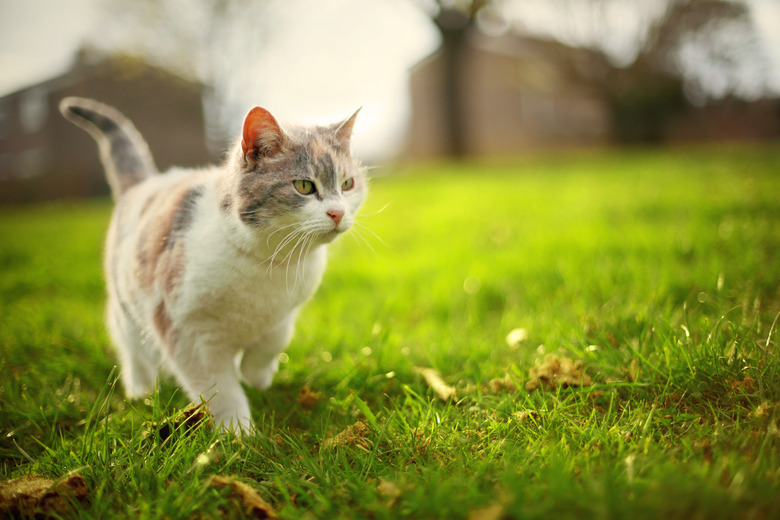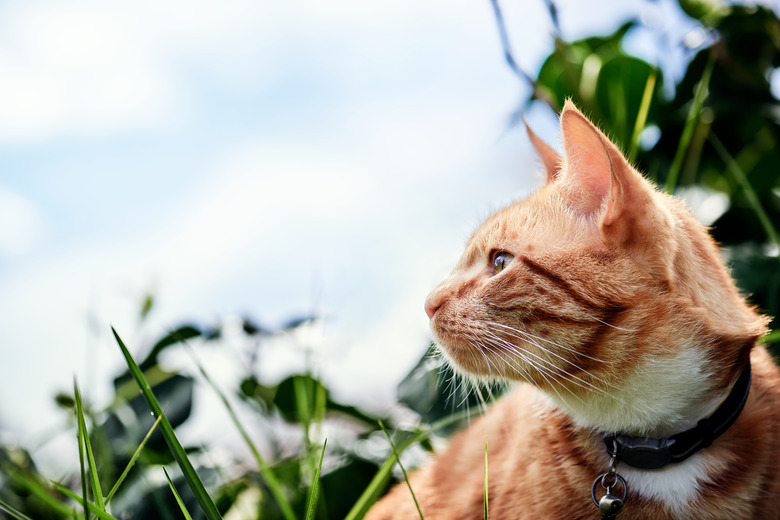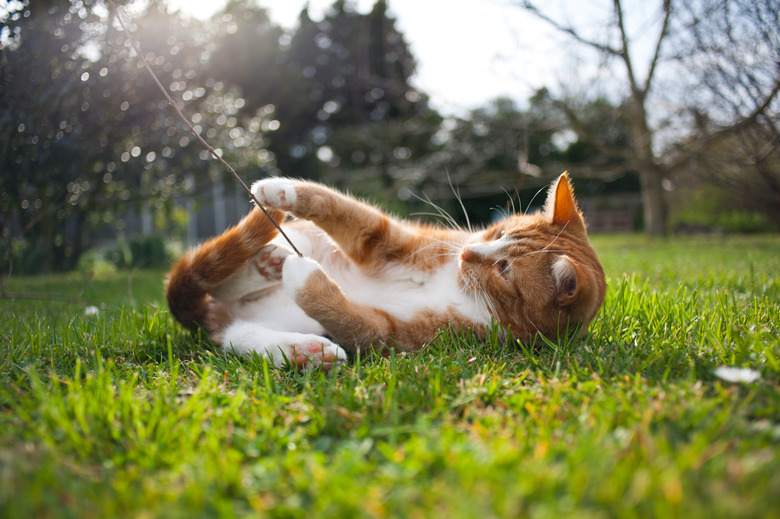How To Keep A Cat From Pooping In A Sandbox
A backyard sandbox can be a wonderful hub for childhood play, but it loses appeal once neighborhood cats claim it as a litter box. This can be more dangerous than you might think.
According to the Cornell Feline Health Center, cats are hosts for a parasite called toxoplasmosis gondii, but other animals (including humans) can be infected with it too. When the parasite reproduces and forms eggs (called oocysts), these can be shed in the cat's poop, which can be a source of toxoplasmosis infection. It takes one to five days before the shed eggs are infectious. Note, however, according to the Mayo Clinic the most common source of human toxoplasmosis infection is undercooked meat.
Granted, the specific health issues are still being researched, but potential exposure to any parasites isn't desirable. Keeping cat poop out of children's sandboxes is clearly a goal. Step one is to keep the cats out of the sandbox in the first place.
A sandbox should be a worry-free safe place for your kids to play. Here are some suggestions for keeping cats out: cover the sandbox, employ repellents, or take other measures if the neighbor cats are the problem.
Sandboxes are appealing to cats
Sandboxes are appealing to cats
A sandbox is essentially nothing more than giant litter box, in the eyes of a cat. Cats instinctively bury their feces to hide it from predators, so the sandbox provides an ideal location for feline bathroom activity. Cats who have been litter-box trained might simply believe they are doing exactly what they are supposed to do.
Use a cover to keep cats out of the sandbox
Use a cover to keep cats out of the sandbox
The simplest method for keeping cats from leaving waste in your children's sandbox is to keep the sandbox covered so cats cannot get into it. Purchase a cover for your sandbox that fits snugly, or secure a tarp over it. If you're handy, search social media sites for DIY 'sandbox cover' projects that you can tailor to size.
Whatever type of cover you use, you'll have to ensure it prohibits cats from entering any time the sandbox is not in use. Just remember to put the cover on after playtime, and especially at night.
Use repellents to keep cats out of the sandbox
Use repellents to keep cats out of the sandbox
Place cat repellent products in and around your sandbox. Sprays and powders are offensive to the feline sense of smell, so cats stay away. Ensure the specific product you choose is nontoxic and safe for children. Follow all the instructions on the package to apply the product properly.
According to the David Suzuki Foundation, cats steer clear of strong citrus scents. A natural option is to put fresh orange peels, whose scent is repugnant to cats, in the sandbox. Naturally or chemically, you'll have to repeatedly apply the deterrent to achieve long-term results.
One potential long-term solution is an ultrasonic cat repellent device. These devices emit a high-frequency noise that is supposed to be undetectable by the human ear but unpleasant to the feline ear.
Keep neighbor cats out of the sandbox
Keep neighbor cats out of the sandbox
If the cats leaving waste in a sandbox on your property do not belong to you, then you have a valid complaint. If the loose animals belong to neighbors, speak to them or to a civic authority. If the cats are strays or feral, ask your local animal control department to assist you in removing the animals.
Outdoor cats might be prone to developing diseases and picking up parasites. If they are relieving themselves in your sandbox, your children could be exposed to whatever illnesses they might be carrying—all the more reason to keep your kid's sandbox covered.
A cover will keep cats out of the sandbox from the start, and will discourage our feline friends from confusing your child's play zone with their litter box indoors.


